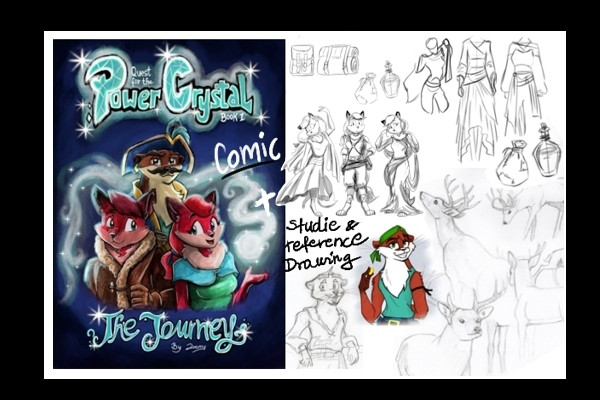HOME | DD
 PCAwesomeness — WWB Episode 4. Hunter Valley
PCAwesomeness — WWB Episode 4. Hunter Valley

#barbourofelis #megalodon #neogene #teleoceras #wwb #amphicyon #gomphotherium #aepycamelus #hipparion #carcharocles #epicyon #walkingwithbeasts
Published: 2016-08-13 01:26:57 +0000 UTC; Views: 9309; Favourites: 42; Downloads: 39
Redirect to original
Description
Miocene California11 million years ago (Tortonian)
Unknown Californian locality
After the Earth underwent extreme changes during the Oligocene, all life had proliferated. Since all the tropical forests had been pushed back to the equator, the world supported two main biomes: the underwater kelp forests and the vast grasslands. As well as this, the fauna had really diversified during this period; some animals previously present during the Oligocene such as bear dogs, horses, phorusrhacids, and camels had reached their highest peak, joined by newer types of animals such as gomphotheres, giraffes, and apes. All of these animals would wander around in a wide, grassy paradise for about 15 million years, right before other changes would come.
The lack of an episode covering the longest epoch in all of the Neogene (and by extension, the Cenozoic) probably pissed most of you off. There are many amazing options for a Miocene episode, but I decided to focus on North America since I wanted you guys to have a land ruled by terrestrial mammals instead of just another archosaur/sea monster tangent. This episode will focus on a female Epicyon who tries to tend to her young in many ways, from helping them catch prey to protecting them from the other predators that roam the grassland. As well as this, since this is a Miocene episode, I have a creeping feeling that some of you (the percentage who didn't care about that loss) are gonna smash me for including 4 predator genera, having a predator be the main character, giving the sensationalist's pet otodontid a small appearance, or even thinking of this episode in the first place, so please don't.
Amphicyon ingens: This 2.5 meter long bear-dog is one of the bigger carnivorans that lived during the Miocene epoch. It is a predator, preying on rhinos, horses, proceratids, deer, and chalicotheres. In this episode, it will establish itself as the apex predator of the environment, preying on anything that's not too big for it whenever it's hungry; in fact, it will even attempt to eat the Epicyon pups. Pose based on 's reconstruction.
Hipparion tehonense: This 1.4 meter tall horse is one of the most successful perissodactyls in Earth's history, starting out in the Miocene and persisting up to the middle Pleistocene. It is an herbivore, feeding on grass. In this episode, it, like its ancestor, will be a wary and skittish herbivore, often fleeing at the first sight of danger. Pose based on 's skeletal.
Aepycamelus alexandrae: This 2.3 meter tall camel has a really long neck, due to giraffe-like lengthened neck vertebrae. It is an herbivore, feeding on leaves. In this episode, it will be nothing more than an ambient animal (booooooorrrriiiiiiiiiiiing). Pose based on 's reconstruction.
Teleoceras meridianum: This 3 meter long rhinoceros is very unique, due to its highly reduced nasal horn. It is an herbivore, feeding on grass. In this episode, it will be a semi-aquatic herbivore, wallowing around in the water to cool off during hot days; as well as this, slightly more laid-back than the Hipparion, due to the fact that it has more defenses than the horse does. Pose based on 's skeletal.
Epicyon haydeni: This 2 meter long dog was rather unique, as it had a massive head with powerful jaws, giving its skull more of a pantherine look than a canine one. It is a predator, preying on rhinos, horses, proceratids, and deers. A female individual will be the main character of this episode, living in a burrow and taking great care of her 3 pups by helping them catch prey, making sure they don't stray away from her, and even protecting her from other animals such as Amphicyon and Barbourofelis. Pose based on 's reconstruction.
Barbourofelis loveorum: This 1.6 meter long barbourofelid may look like a machairodontine cat; however, it would have been more muscular, and would have walked with a plantigrade posture. It is a predator, preying on rhinos, horses, proceratids, deer, and chalicotheres. In this episode, it will be another predator that focuses on bigger, slower prey; however, it will also try to get its sharp weaponry on the Epicyon pups from time to time. Pose based on 's reconstruction.
Gomphotherium obscurum: This 2.5 meter tall gomphothere is a very strange proboscidean, as in addition to the two tusks slightly below its nose, it had two additional tusks that protruded from the animal's lower jaw and were fused together, creating a toothy shovel. It is an herbivore, feeding on leaves from trees as well as plants lower to the ground. In this episode, it will serve as an ambient animal at first; however, one male individual, triggered by hormones, will descend into a blinding rage and kill anything that gets within close proximity of it. Pose based on the leftmost skeletal in this picture: en.wikipedia.org/wiki/File:Gom…
Carcharocles megalodon: Don't start any crap about this 16.8 meter long otodontid. Enough said.
Any thoughts?



























